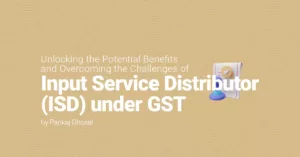In an effort to simplify certain complex topics related to domestic and international taxation scenario in our India, our consultants shall be answering some frequently asked questions about these topics. In this edition, we cover a relatively new territory for India businesses engaging in international transactions, i.e., the topic of transfer pricing.
Aditi Mehra, Manager – Transfer Pricing Services at Coinmen is the in-house expert on the matter, as she takes provides simple answers to these questions for people to understand, without using legal or technical jargon and explaining it from the perspective of a business.
What is transfer pricing and why is it done?
In layman terms, transfer price is the price at which one party transfers products or services to its related party.
Transfer pricing regulations and compliances were introduced to ensure that global related parties conduct their business in a manner that there is no base erosion or profit shifting. Accordingly, every tax jurisdiction gets its due taxes.
To understand transfer pricing compliance in a simple manner, the related parties transacting, need to ensure that they conduct business in such a manner as if they’d be dealing with an unrelated party in an uncontrolled scenario, i.e., at arm’s length.
What is the scope of transfer pricing?
Indian transfer pricing regulations are applicable on international transactions between international related parties. Further, Indian regulations also cover certain domestic transactions between two related Indian parties under transfer pricing scenario. Both of the above has been explained below in brief:
1. Associated Enterprises and International transactions.
According to Indian transfer pricing regulations, two companies are said to be “related” or referred to as “associated enterprises” if there is direct/indirect participation in the management, control or capital of an enterprise or by the same people in both the companies.
Other factors which can make two entities “associated” are:
-
Shareholding
-
Giving more than 26% voting power
-
Dependence on source of raw materials or customers
-
Influences on price
-
Depending on borrowings, and
-
Authority to appoint board of directors or executive directors beyond a certain threshold.
Transfer pricing regulations define an international transaction as a transaction between two or more associated enterprises, where either or both of which are non-residents and have a bearing on the profits, income, losses or assets of such enterprises.
A few examples of international transactions subject to transfer pricing are:
-
Purchase, sale, lease of tangibles or intangibles;
-
Capital financing such as loan, purchase/sale of equity;
-
Provision/availing of services;
-
Cost apportionments, allocations, contributions;
-
Cost reimbursements;
-
Transaction of business restructuring or re-organisation;
-
Transactions having a bearing on profits, income, losses or assets; and
-
Transactions with unrelated parties as a result of prior arrangements with related parties.
2. Specified Domestic Transactions (the answer to “What is Domestic Transfer Pricing?”)
The Finance Act 2012 brought certain Specified Domestic Transactions (‘SDTs’) under the umbrella of transfer pricing regulations in India. The transactions exceeding INR 200 million are covered under such provisions, which includes transactions with units eligible for tax holiday, and newly set up manufacturing companies covered u/s 115BAB.
Following are the due dates of submitting the required three-tier documentation, as per the Indian transfer pricing calendar –
-
Master File: 30th November
-
Master File: 30th Novemberth November
-
Master File: 30th Novemberst December
Know more about why transfer pricing is important for doing business in India: Click Here
Filing of refund application: The business must file a refund application in the specified form (RFD-01) on the GSTN portal within 2 years from the end of the relevant financial year. The refund application must be accompanied by supporting documents such as invoices, purchase orders, and shipping bills.












